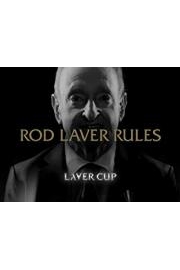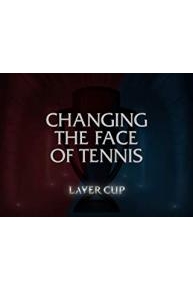-
Channel

Watch Rod Laver Explains how Laver Cup Works
- NR
- 1969
Rod Laver, the legendary Australian tennis player, gives a detailed breakdown of how the Laver Cup works in the 2019 Laver Cup Bonus Content show. Laver, who is also the tournament's namesake, explains the game's history and objective, the rules that are unique to the Laver Cup, and the roster of players representing Team Europe and Team World.
The Laver Cup is a relatively new tennis tournament that was first held in 2017 in Prague, Czech Republic. It was created by Roger Federer and his management company, TEAM8, and is named after Rod Laver, who is widely regarded as one of the greatest tennis players of all time.
The tournament is a team event that pits six players from Europe against six players from the rest of the world. The players are split into two teams, and each team is captained by a current high-ranking player. The competition takes place over three days, with players competing in singles and doubles matches.
Laver explains that the Laver Cup is unique in that it employs a scoring system that is different from regular tennis tournaments. The scoring system is similar to that of the Ryder Cup in golf, where the competition is split into several matches, and each match is worth a certain number of points. The first team to reach 13 points wins the tournament.
Laver also highlights some of the rules that are specific to the Laver Cup. For instance, a tie-break is played only when the score is tied at six games all in the final set of a singles match, and there are no tie-breaks in the doubles matches. If the competition is tied at 12-12, a one-set doubles match is used as a tie-breaker to determine the winner.
Laver points out that the team captains play a crucial role in the tournament. They are responsible for selecting which players will participate in which matches, and they also have the power to make substitutions during the competition. Laver explains that this strategy is essential, as both teams have players with different strengths and weaknesses.
Laver then goes on to break down the roster of players representing each team. Team Europe is captained by Björn Borg and includes players such as Roger Federer, Rafael Nadal, and Stefanos Tsitsipas. Team World is captained by John McEnroe and includes players such as Nick Kyrgios, Jack Sock, and John Isner.
Laver notes that there is a lot of excitement around the tournament, as it gives fans the rare opportunity to see top players compete on the same team. He also points out that the tournament has a charitable aspect, with a portion of the proceeds going towards various tennis-related charities.
Overall, Laver's breakdown of the Laver Cup is informative and enjoyable. He provides a clear understanding of the tournament's unique format, scoring system, and rules. Moreover, his analysis of the players adds a layer of excitement to the competition. The show is highly recommended for any tennis fan looking to deepen their understanding of this exciting new tournament.




















